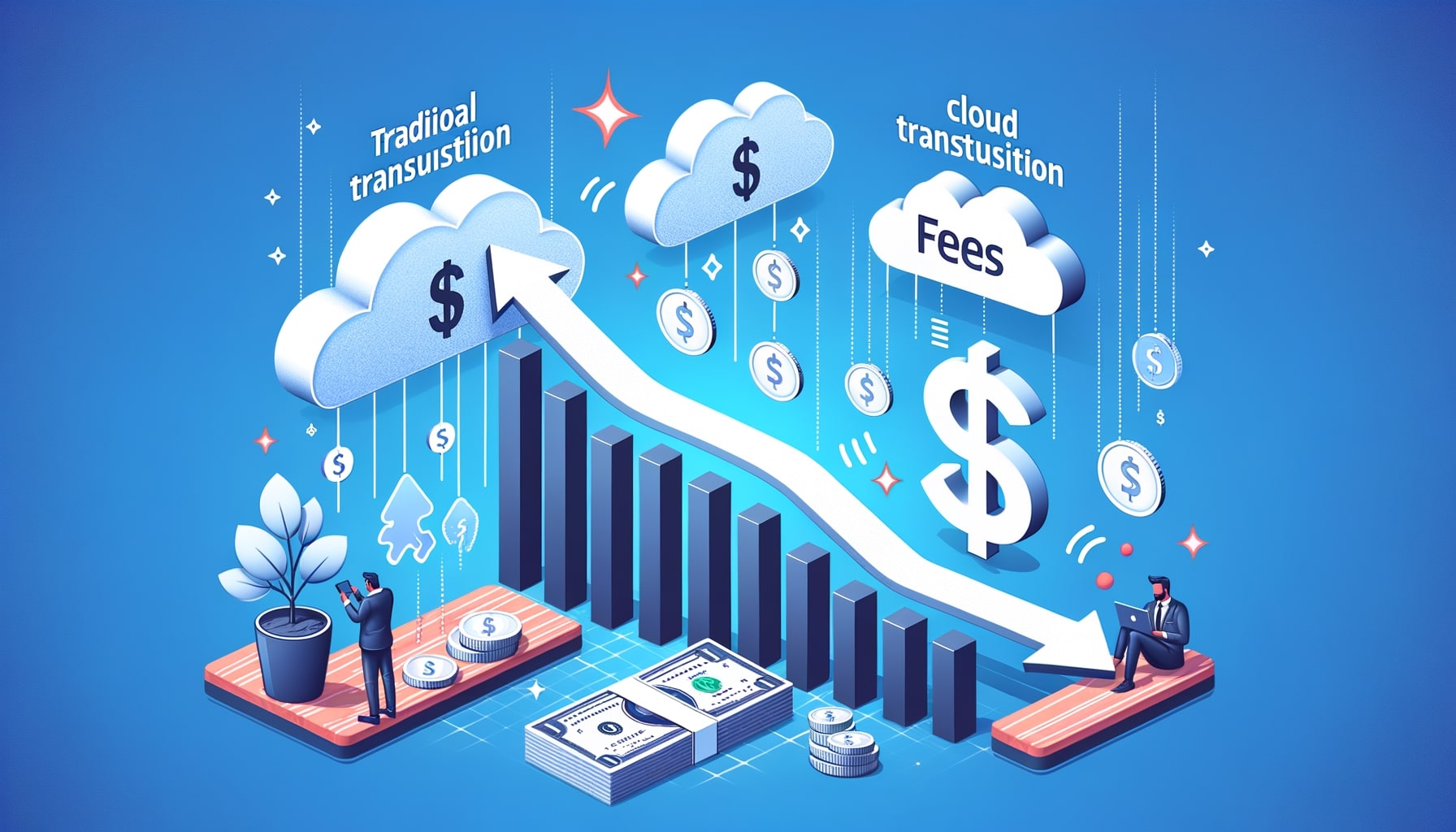How Open Banking APIs Are Changing Cloud Payments
In recent years, the financial industry has witnessed a significant transformation with the advent of open banking APIs and cloud payments. Open banking APIs, which allow third-party developers to access and utilize banking data, have revolutionized the way financial services are delivered. At the same time, cloud payments have emerged as a secure and convenient method for conducting transactions. This article will explore the intersection of open banking APIs and cloud payments, highlighting their impact, benefits, security enhancements, seamless integration capabilities, real-time payment potential, transformation of payment infrastructure, and the challenges and concerns associated with their implementation.
Understanding the Impact of Open Banking on Cloud Payments
Open banking has had a profound impact on the world of cloud payments. By enabling secure access to banking data, open banking APIs have facilitated the development of innovative payment solutions that leverage the power of the cloud. This has resulted in increased competition, improved customer experiences, and enhanced financial inclusion. With open banking APIs, customers can now access a wide range of financial services from different providers through a single platform, making cloud payments more accessible and convenient than ever before.
Exploring the Benefits of Open Banking APIs in Cloud Payments
The benefits of open banking APIs in cloud payments are numerous. Firstly, open banking APIs enable seamless integration of various payment solutions, allowing customers to make payments using their preferred method, whether it be through a mobile app, a website, or even a voice assistant. This flexibility enhances the customer experience and increases customer satisfaction. Additionally, open banking APIs provide real-time access to account information, enabling customers to have a complete view of their finances and make informed decisions about their payments. This transparency promotes financial literacy and empowers customers to manage their money more effectively.
Furthermore, open banking APIs foster innovation by encouraging collaboration between banks and fintech companies. By opening up their APIs, banks can tap into the creativity and expertise of third-party developers, resulting in the development of new and innovative payment solutions. This not only benefits customers but also drives competition in the market, leading to better products and services.
How Open Banking APIs Enhance Security in Cloud Payments
One of the primary concerns when it comes to cloud payments is security. However, open banking APIs have introduced several security enhancements that make cloud payments more secure than traditional payment methods. Firstly, open banking APIs utilize strong encryption protocols to protect sensitive data during transmission. This ensures that customer information remains confidential and cannot be intercepted by malicious actors.
Secondly, open banking APIs implement robust authentication mechanisms to verify the identity of users. This includes multi-factor authentication, biometric authentication, and tokenization. These measures significantly reduce the risk of unauthorized access to customer accounts and prevent fraudulent transactions.
Additionally, open banking APIs enable customers to have greater control over their data. They can choose which third-party providers they want to grant access to their banking data and can revoke access at any time. This puts customers in the driver’s seat when it comes to their data privacy and gives them peace of mind knowing that their information is being handled securely.
The Role of Open Banking APIs in Enabling Seamless Integration of Cloud Payment Solutions
One of the key advantages of open banking APIs is their ability to facilitate seamless integration of various payment solutions in the cloud. Traditionally, different payment methods, such as credit cards, bank transfers, and digital wallets, operated in silos, requiring customers to use different platforms or apps for each payment method. This fragmented experience was inconvenient and time-consuming.
However, with open banking APIs, these payment methods can be integrated into a single platform, providing customers with a unified and streamlined payment experience. For example, a customer can link their bank account, credit card, and digital wallet to a mobile payment app, allowing them to choose their preferred payment method for each transaction. This integration eliminates the need for customers to switch between different apps or platforms, saving them time and effort.
Leveraging Open Banking APIs for Real-time Payments in the Cloud
Real-time payments have become increasingly popular in recent years, as customers seek faster and more convenient ways to transfer money. Open banking APIs play a crucial role in enabling real-time payments in the cloud. By providing instant access to account information, open banking APIs allow customers to initiate and receive payments in real-time, eliminating the delays associated with traditional payment methods.
For example, a customer can use a mobile banking app to transfer money to a friend’s bank account, and the transaction will be processed and reflected in both accounts instantly. This real-time capability is particularly beneficial for businesses that rely on timely payments, such as e-commerce platforms and service providers. It enables them to improve cash flow, reduce payment processing costs, and enhance customer satisfaction.
Open Banking APIs and the Transformation of Payment Infrastructure in the Cloud
The integration of open banking APIs and cloud payments has also led to a transformation of payment infrastructure. Traditionally, payment processing was a complex and costly process, requiring businesses to invest in expensive hardware and software solutions. However, with the advent of open banking APIs and cloud payments, businesses can leverage the infrastructure provided by banks and fintech companies, eliminating the need for costly investments.
Cloud-based payment solutions offer scalability and flexibility, allowing businesses to adapt to changing customer demands and market conditions. They can easily scale their payment processing capabilities to handle increased transaction volumes during peak periods, such as holidays or sales events. Additionally, cloud payments enable businesses to access real-time analytics and insights, helping them make data-driven decisions and optimize their payment processes.
Overcoming Challenges and Concerns in Open Banking APIs for Cloud Payments
While open banking APIs and cloud payments offer numerous benefits, there are also challenges and concerns that need to be addressed. One of the main challenges is ensuring the security and privacy of customer data. As open banking APIs enable the sharing of sensitive financial information, it is crucial to implement robust security measures to protect against data breaches and unauthorized access.
Another challenge is the standardization of APIs across different banks and fintech companies. Currently, each institution may have its own API specifications, making it difficult for developers to build applications that work seamlessly across multiple platforms. Standardization efforts are underway to address this issue and promote interoperability between different systems.
Furthermore, there are concerns regarding the potential for increased competition and market concentration. As open banking APIs enable third-party providers to access banking data, there is a risk that larger players may dominate the market, limiting competition and innovation. Regulatory frameworks need to be in place to ensure a level playing field and promote fair competition.
Frequently Asked Questions about Open Banking APIs and Cloud Payments
Q.1: What is open banking?
Open banking is a system that allows third-party developers to access and utilize banking data through APIs. It promotes competition, innovation, and customer empowerment in the financial industry.
Q.2: What are cloud payments?
Cloud payments refer to the use of cloud computing technology to process and facilitate financial transactions. It offers scalability, flexibility, and convenience for businesses and customers.
Q.3: How do open banking APIs enhance security in cloud payments?
Open banking APIs utilize strong encryption protocols, robust authentication mechanisms, and data control features to enhance the security of cloud payments. They protect sensitive data, verify user identities, and give customers control over their information.
Q.4: How do open banking APIs enable seamless integration of payment solutions?
Open banking APIs allow different payment methods, such as credit cards, bank transfers, and digital wallets, to be integrated into a single platform. This provides customers with a unified and streamlined payment experience.
Q.5: What are real-time payments, and how do open banking APIs enable them?
Real-time payments are transactions that are processed and reflected in accounts instantly. Open banking APIs provide instant access to account information, enabling customers to initiate and receive payments in real-time.
Conclusion
Open banking APIs and cloud payments have revolutionized the financial industry, offering numerous benefits for businesses and customers alike. Open banking APIs enable seamless integration of payment solutions, enhance security, and promote innovation. They enable real-time payments and transform payment infrastructure, making transactions faster and more convenient.
While there are challenges and concerns that need to be addressed, the potential of open banking APIs and cloud payments to drive positive change in the financial industry is undeniable. As technology continues to evolve, we can expect further advancements in open banking APIs and cloud payments, leading to even more innovative and secure payment solutions.










